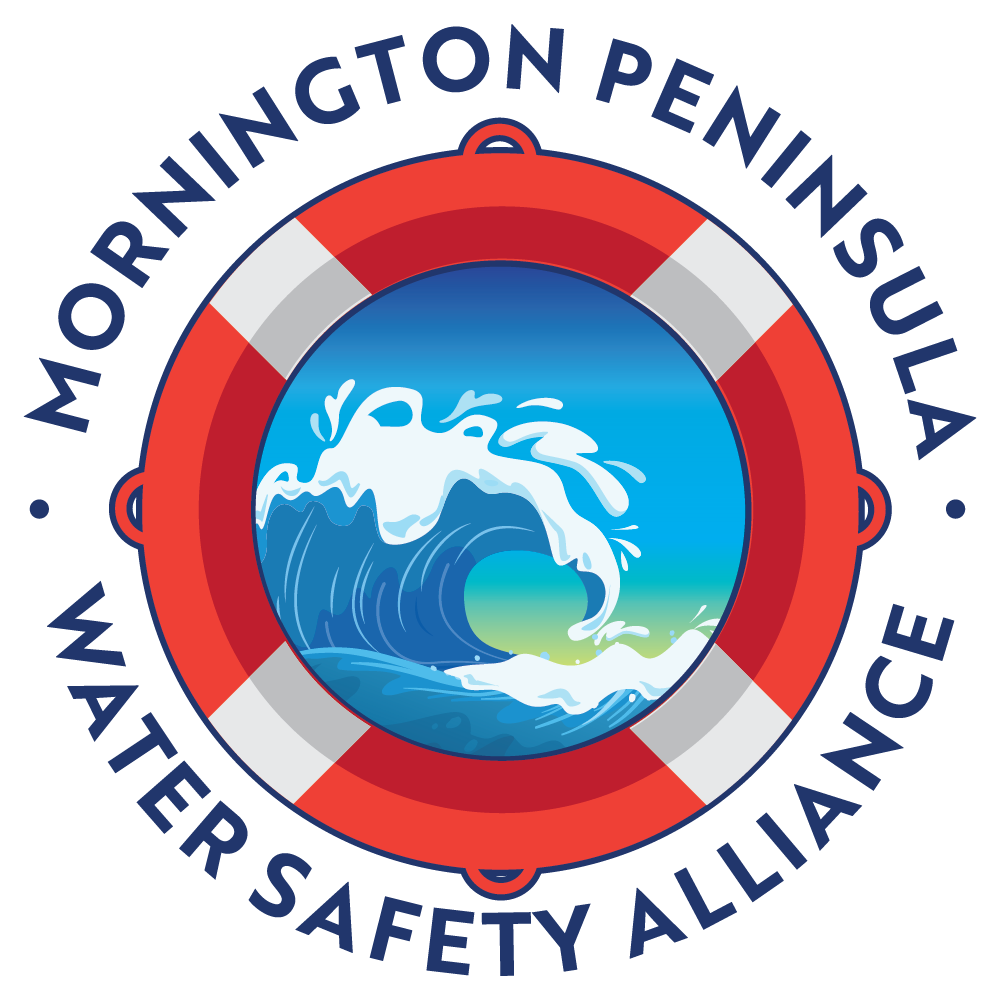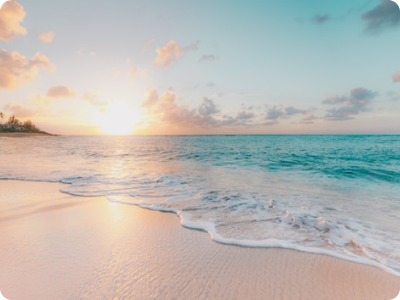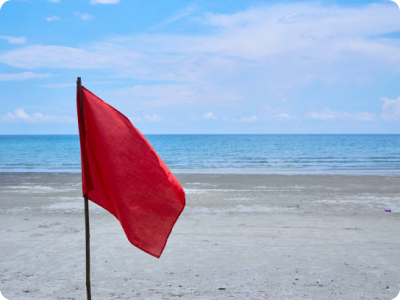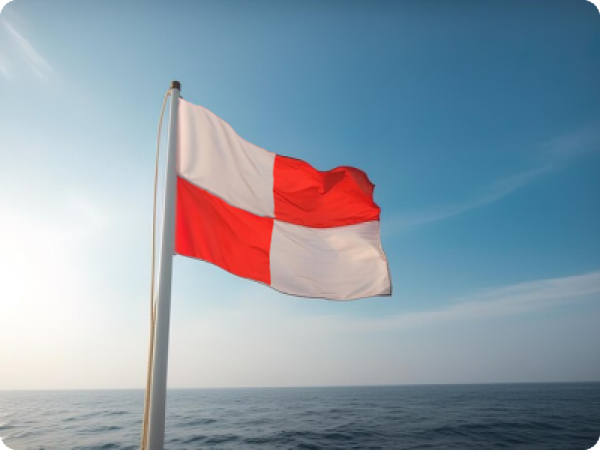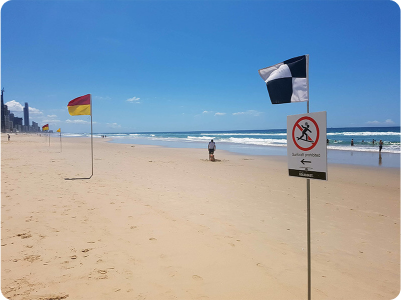Staying safe at the Beach
Lifeguards look at the conditions on the beach and raise their red and yellow flags to mark out the safest part of the beach for you to swim and where they will be watching you.
When visiting the beach, it’s important to read the safety signs in place to learn about the dangers at that location. There are lots of signs and symbols at Australian beaches, here is some information to help you understand what these mean.
Boat Ramp
Boat in the Area
Child Supervision
Deep Water
Groynes
Incoming Tides
Large Breaking Waves
No Diving
Red & Yellow Flags
Sandbars
Shallow Water
Slippery Rocks
Slipper Surface
Stairs
Steep Access
Steep Water Edges
Strong Currents
Submerged Objects
Swimming Not Advised
Unstable Cliffs
Uneven Ground
Unprotected Edge
Variable Water Depth
How to identify a rip current
Rip currents are one of the greatest, and most common, hazards on Australian beaches. At any given time, there are approximately 17,000 rip currents across the 11,000 beaches in Australia. Yet, two out of three people can’t spot a rip current, and half of all people don’t always check for rip currents before getting in the water.

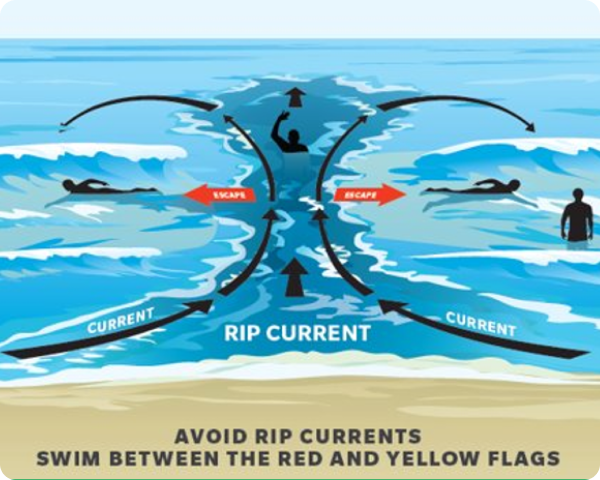
Swimming at the beach
Knowing how to stay safe on the beaches in this region could save your life, and the life of a loved one. Your safety is your responsibility, and it’s important you take note of the safety signs and warnings for each beach to make sure you can enjoy these beautiful locations safely.
Reminder about the risk of rockfalls from fragile cliffs
A reminder about the risk of rockfalls from fragile cliffs along the Surf Coast. There are concerns about the potential for landslides and rockfalls along some of the beaches along the Surf Coast.
Recent heavy rainfalls have added to the fragility of these cliffs. We urge beach goers to remain vigilant and take adequate steps to avoid the likelihood of an accident.
It is important for everyone to avoid being in close proximity to cliff edges, do not stand or sit under coastal cliffs and refrain from being stationary within 10m from the base of coastal cliffs.

